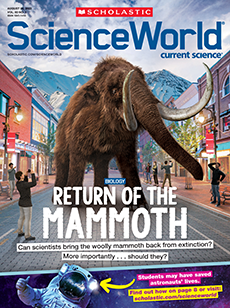On July 20, 1969, some 530 million people gathered in front of their televisions to view one of humanity’s most spectacular achievements. They watched live as astronauts walked on the moon for the first time! From the lunar surface, astronaut Neil Armstrong uttered these now-famous words: “That’s one small step for a man, one giant leap for mankind.”
“There was the sense that we were witnessing a peak moment in human history,” says Andrew Chaikin, a space historian who’s written several books about lunar exploration. “We knew there would never be a moment quite like this again.”
This year marks the 50th anniversary of that incredible accomplishment. The milestone comes at a special time for NASA, the agency in charge of American space exploration. It’s developing plans for a new series of lunar missions that will send people back to the moon for the first time in nearly half a century.
On July 20, 1969, some 530 million people gathered by their televisions. As they watched live, humans accomplished one of their greatest feats. Astronauts walked on the moon for the first time! Astronaut Neil Armstrong stood on the lunar surface. He said these now-famous words: “That’s one small step for a man, one giant leap for mankind.”
“There was the sense that we were witnessing a peak moment in human history,” says Andrew Chaikin. He’s a space historian who’s written several books about lunar exploration. “We knew there would never be a moment quite like this again.”
This year marks the 50th anniversary of that amazing accomplishment. It comes at a special time for NASA, the agency in charge of American space exploration. NASA is planning a new series of lunar missions. They want to send people back to the moon for the first time in nearly 50 years.

